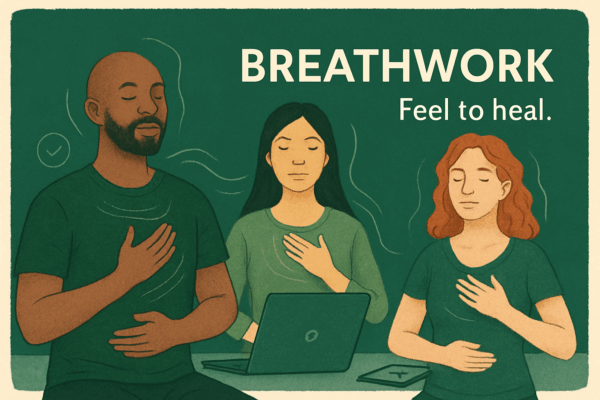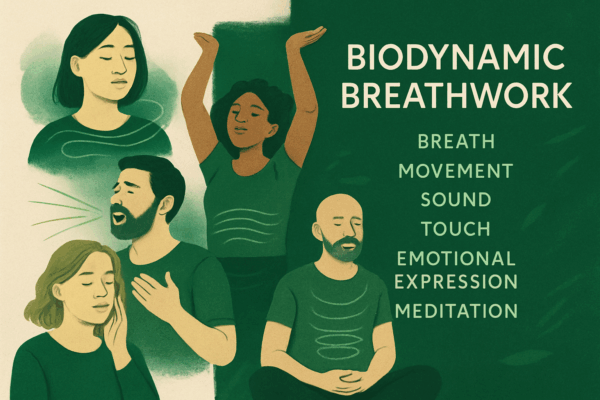Did you know a breath therapist can help unlock your body’s natural healing and resilience? As we step into 2025, breath therapists are at the forefront of a wellness revolution, guiding people to transform their health through conscious breathing.
This guide demystifies what a breath therapist does, explains their core methods, and reveals why breathwork therapy is gaining global recognition.
You’ll discover what breath therapy involves, how sessions work, science-backed benefits, pathways to certification, tips for choosing a therapist, and the future of this growing field.
Ready to reduce stress, heal trauma, and boost your energy—one breath at a time? Read on and transform your wellbeing.
What Is a Breath Therapist?
Understanding the role of a breath therapist is essential for anyone curious about modern breathwork. These professionals are reshaping wellness and mental health practices by focusing on the transformative power of conscious breathing.
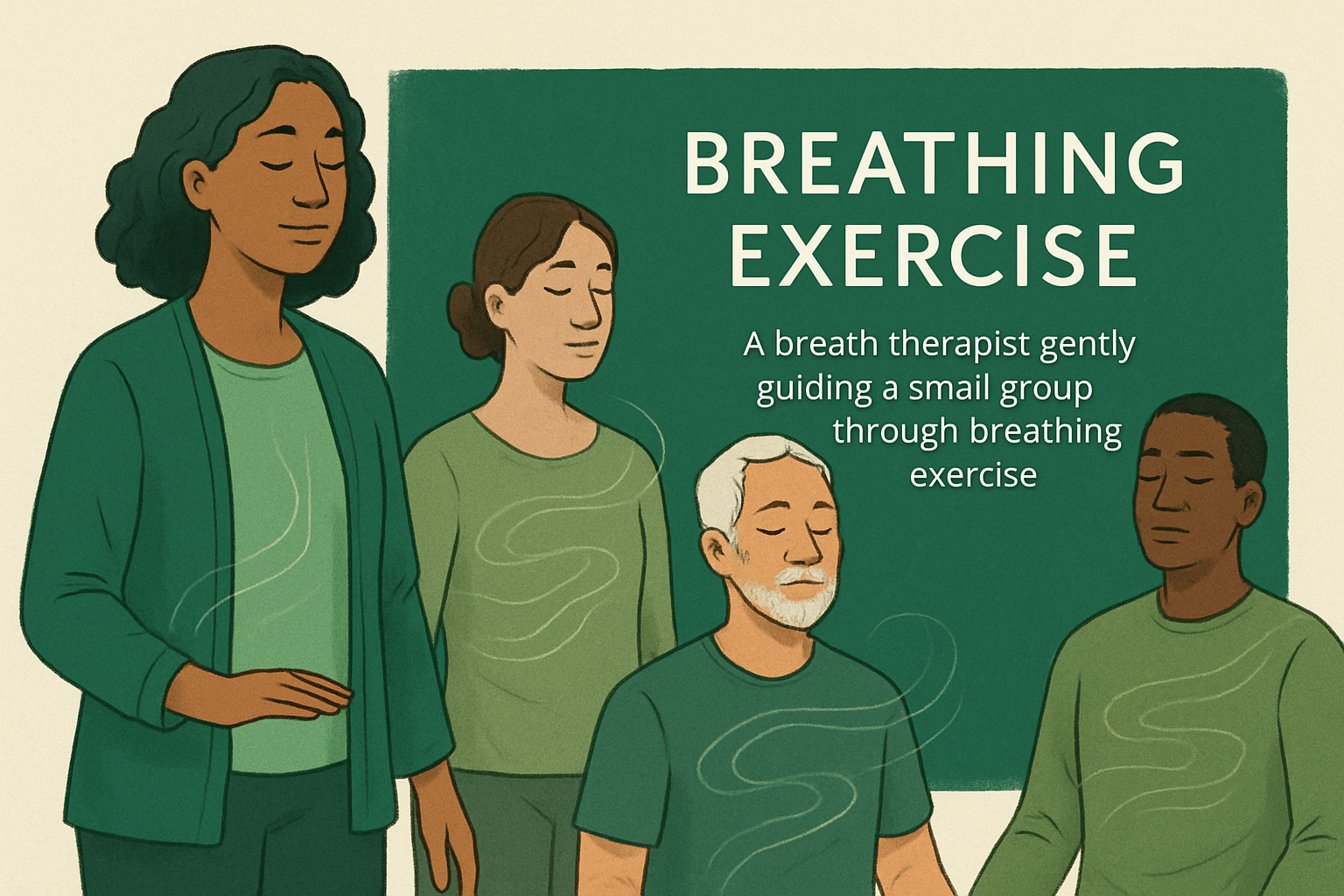
Defining the Role of a Breath Therapist
A breath therapist is a trained professional who guides individuals through structured breathing exercises to promote emotional, physical, and mental well-being. Unlike yoga instructors or psychotherapists, a breath therapist uses non-medical, client-centered techniques rather than prescribing treatments or analyzing thoughts.
Their main responsibility is to facilitate safe, supportive sessions where clients can explore their breath and access deeper states of awareness. For example, a breath therapist might help someone release pent-up emotions using specific breathing patterns. Importantly, therapists act as facilitators, not doctors or diagnosticians.
Curious about how this differs from other practitioners? The Breathwork Facilitator vs Therapist resource clarifies these distinctions, ensuring you know what to expect from your breath therapist.
Key Modalities and Approaches
Breath therapists draw from a variety of evidence-based techniques to support client goals. The most common modalities include Conscious Connected Breathwork, Holotropic Breathwork, Rebirthing, and Biodynamic Breathwork (BBTRS®), among others.
Each breath therapist carefully selects techniques based on the client’s needs, blending Eastern and Western philosophies. For instance, alternate nostril breathing may be used to reduce anxiety, while circular breathing can support emotional release. Research shows that certain practices activate the parasympathetic nervous system, promoting relaxation and balance.
Here’s a quick look at popular modalities:
| Technique | Focus |
|---|---|
| Conscious Connected | Emotional release, clarity |
| Holotropic | Transpersonal insight |
| Rebirthing | Trauma healing, stress relief |
| BBTRS® | Body-based trauma resolution |
Core Principles of Breathwork Therapy
At the heart of breath therapy lies trust in the body’s wisdom and the importance of somatic awareness. A breath therapist teaches that breath acts as a bridge between mind and body, helping clients reconnect with themselves on a deeper level.
Safety, consent, and trauma-informed care are foundational. Every breath therapist creates a supportive environment where clients can process emotions at their own pace. For example, a therapist might notice a client’s physical tension and guide them to breathe into that area, allowing stored emotional energy to surface and release.
Breathwork therapy is both a science and an art, blending structured technique with intuitive facilitation.
Who Can Benefit from Breath Therapy?
Breath therapy is accessible to a wide range of people. Individuals struggling with stress, trauma, anxiety, or chronic pain often find relief through sessions with a breath therapist. It’s also valuable for those seeking personal growth or a deeper mind-body connection.
Unlike traditional talk therapy, breathwork offers direct, embodied healing rather than relying solely on cognitive processing. For example, clients who have difficulty expressing emotions verbally may experience powerful breakthroughs during breathwork.
Clinical studies show that breath therapy can reduce cortisol levels and improve overall well-being. As awareness grows, breath therapists are making this transformative practice available to people from all backgrounds.
How Breath Therapy Sessions Work
Curious about what actually happens when you meet with a breath therapist? Each session is a carefully crafted experience, designed to help you access the healing power of your own breath. Whether you’re new to breathwork or returning for deeper transformation, knowing the flow can ease nerves and boost your confidence.

What to Expect in a Typical Session
Your journey with a breath therapist often begins with a simple conversation. The therapist will ask about your goals, health background, and what you hope to achieve. This establishes trust and ensures your needs are front and center.
Sessions can happen in private settings, small groups, or even online. Most last around 60 minutes, typically starting with a check-in, followed by guided breathwork, and ending with time to process your experience. For example, you might lie down, listen to gentle music, and follow your breath therapist’s voice as you explore new breathing patterns.
Many breath therapists offer both one-on-one and group formats, allowing you to choose what feels safest and most supportive.
Step-by-Step Process of a Breathwork Session
A breath therapist will guide you through a clear, supportive process. It usually unfolds like this:
- Intake: You share current feelings, intentions, and any concerns.
- Breath Assessment: The breath therapist observes your natural breathing and notes patterns.
- Technique Selection: Techniques are chosen based on your needs—like calming anxiety or energizing the body.
- Guided Practice: You’re guided through specific breathwork, with gentle cues and adjustments as needed.
- Integration: After active breathing, you have space to reflect, share, or simply rest.
This structure helps you feel safe while allowing room for deep personal insight. The breath therapist creates an atmosphere where emotional and physical shifts can unfold at your own pace.
Common Techniques and Tools Used
Breath therapists draw from a toolkit of powerful techniques. You might experience:
- Circular breathing for continuous, connected breaths
- Rhythmic or deep breathing for relaxation or energy
- Movement and sound to help release tension
- Music to support mood and focus
Some breath therapists gently incorporate touch or encourage you to move your arms and body, supporting emotional release. Tools and techniques are always tailored to your comfort level and goals. For example, movement might be added to help loosen areas of physical tightness.
Personalization is key—your breath therapist adapts every session to meet you exactly where you are.
Emotional and Physical Responses During Sessions
Working with a breath therapist can open the door to a wide range of sensations and emotions. You might feel deeply relaxed, experience tingling, or even notice old emotions surfacing. Emotional release is a natural part of breathwork; some clients report feeling lighter or more grounded afterward.
Integration and aftercare are essential. Your breath therapist will support you as you process these shifts, ensuring you leave feeling safe and empowered. If you’re curious about how emotional release works in these sessions, explore Emotional Release in Breathwork for deeper insight.
Clinical studies show significant reductions in anxiety and improved mood after guided breathwork, making these responses both common and beneficial.
Safety Considerations and Contraindications
Safety is always the top priority for a breath therapist. If you have specific medical conditions—like pregnancy, cardiovascular concerns, or epilepsy—it’s vital to let your therapist know. They will screen for these and modify practices as needed.
For example, someone with asthma may have techniques adjusted to prevent discomfort. Informed consent and open communication are central to every session. Your breath therapist will answer questions, set clear boundaries, and ensure you feel empowered throughout.
With the right support, breathwork is a safe and transformative practice for most people.
The Science and Benefits of Breathwork Therapy
Breathwork is more than just deep breathing—it’s a science-backed approach that is transforming how people heal and thrive. A breath therapist uses specific techniques to unlock the body’s natural ability to regulate stress, process emotions, and restore balance. Let’s dive into how breath therapy works on both a biological and emotional level, what the research says, and why so many are turning to breath therapists for support.
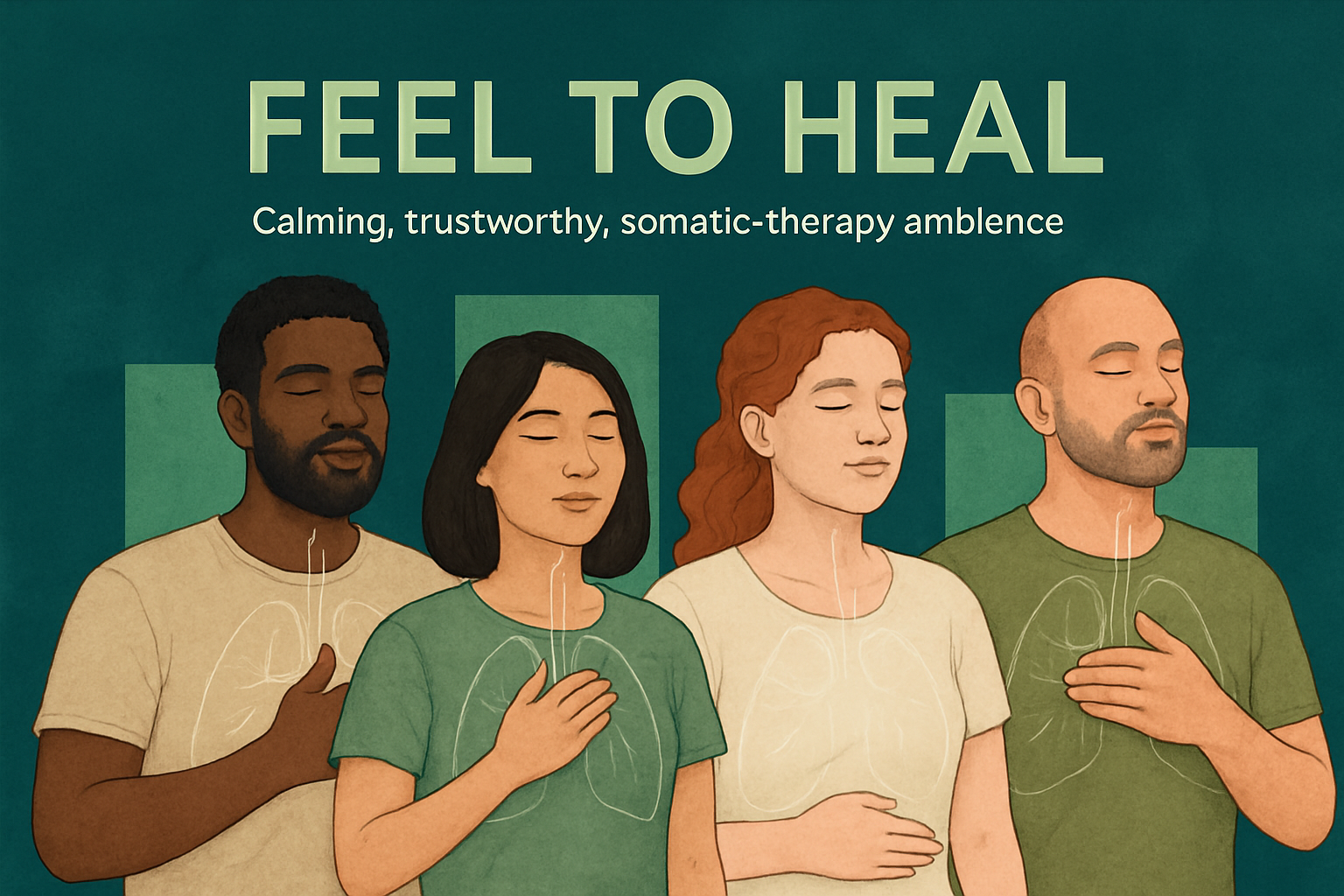
Physiological Effects of Breathwork
A breath therapist helps activate the parasympathetic nervous system through guided breathing exercises. This shift calms the body, reducing heart rate, blood pressure, and stress hormones like cortisol. Deep, rhythmic breathing also boosts vagal tone, supporting better digestion and immune response.
Clinical trials show that even a single session of breathwork can lower cortisol levels and promote relaxation. Brainwave studies reveal increased alpha and theta waves, which are linked to calm and creativity. By working with a breath therapist, clients gain tools to regulate their body’s stress response naturally.
Psychological and Emotional Benefits
Breath therapists are trained to guide clients through emotional landscapes using breath as the bridge. Breathwork supports emotional regulation, resilience, and clarity—key ingredients for mental health. Many people find relief from anxiety, trauma, and lingering grief with the help of a breath therapist.
Unlike talk therapy, breath therapy offers direct, embodied healing. Clients often report breakthroughs or a sense of lightness after sessions. Studies link breathwork to improved outcomes in PTSD and depression, making breath therapists valuable allies in emotional wellness.
Evidence-Based Research and Data
Scientific research on breathwork has surged in recent years. Randomized controlled trials and meta-analyses show that working with a breath therapist improves mood, reduces stress, and enhances overall well-being. For example, a 2023 meta-analysis found significant benefits for stress and mental health across diverse populations.
Compared to traditional therapies, breathwork offers rapid, accessible results. The growing body of peer-reviewed research in the 2020s continues to validate the impact of breath therapists in holistic health.
Limitations and Risks
While a breath therapist provides powerful tools for healing, breathwork is not a substitute for medical or psychiatric care. Some individuals may experience intense emotions or physical sensations during sessions, so trauma-informed facilitation is crucial. A breath therapist always screens for health conditions and adapts practices when needed.
Informed consent and clear communication are non-negotiable. Ongoing research is helping breath therapists refine best practices and ensure client safety. Always consult your healthcare provider before starting new therapies.
Real-World Success Stories
Many people have found life-changing results with a breath therapist. Case studies highlight individuals overcoming trauma, managing chronic pain, and reducing stress through regular breathwork. In group settings, breath therapists have helped healthcare workers combat burnout and restore balance.
Personal testimonials often mention feeling more grounded, energized, and connected after sessions. These real-world stories fuel growing interest in breath therapists and inspire others to explore breathwork as a path to wellness.
Training, Certification, and Professional Standards for Breath Therapists
Becoming a breath therapist in 2025 means stepping into a field that blends science, intuition, and compassion. The pathway to this profession is more structured and recognized than ever before, making it accessible for those passionate about holistic wellness and trauma-informed care.
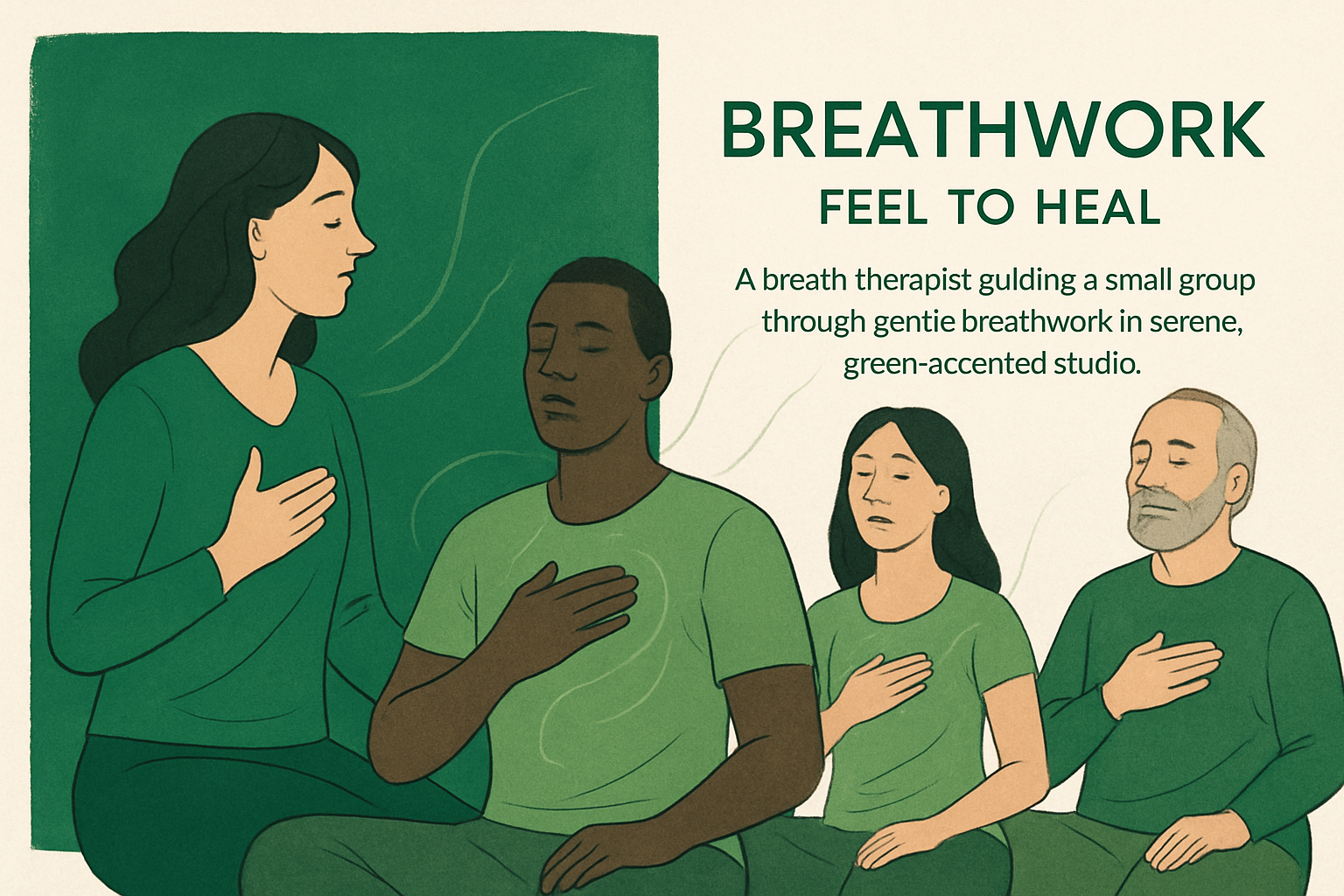
Pathways to Becoming a Breath Therapist
The journey to become a breath therapist typically begins with a strong interest in body-mind wellness or prior experience in related fields like yoga, counseling, or somatic therapies. Training options are diverse, ranging from weekend workshops to comprehensive, multi-year certification programs.
Many start with foundational courses that introduce breathwork principles and safe facilitation. Others transition from careers in health or wellness, seeking to deepen their expertise. For example, a yoga instructor may pursue additional training to become a certified breath therapist and offer a broader spectrum of support.
Most programs require a minimum level of education and a commitment to personal growth. This ensures every breath therapist is equipped to guide others through both gentle practices and deeper emotional processes.
Accreditation and Certification Bodies
Professional standards are upheld by several international organizations. The Global Professional Breathwork Alliance and the Biodynamic Breathwork Institute are among the most respected bodies, each setting rigorous benchmarks for training and ethics.
Securing certification from an accredited institution is vital. It demonstrates that a breath therapist has met recognized standards in safety, trauma awareness, and facilitation. For instance, a practitioner certified by an established body can assure clients of both skill and ethical practice.
These credentials are not just about prestige—they’re about client trust and the integrity of the field. As breathwork grows, certification helps set practitioners apart.
Core Curriculum and Skills Taught
Every reputable breath therapist training program covers a range of core topics. Students study the anatomy and physiology of breath, learn to recognize and respond to trauma, and develop strong facilitation and ethical skills.
Hands-on practice is central. Trainees learn to assess breath patterns, support emotional release, and hold safe space for clients. Many programs include supervised sessions and mentorship for real-world experience.
A typical curriculum might include:
- Breath anatomy and mechanics
- Trauma-informed care principles
- Client assessment and integration
- Ethics and professional boundaries
This comprehensive approach ensures each breath therapist is well-rounded and ready for diverse client needs.
Ongoing Professional Development
The learning journey doesn’t end with certification. Ongoing education is essential for every breath therapist, keeping skills sharp and knowledge current.
Many practitioners join peer supervision groups, attend annual breathwork conferences, or participate in advanced workshops. For example, breath therapists might explore new trauma-healing research or learn emerging techniques at symposiums.
This commitment to growth ensures safety and quality for clients. In a rapidly evolving field, staying connected to the latest science and best practices is non-negotiable.
Choosing the Right Training Program
Selecting a breath therapist training program is a personal process. Key factors include accreditation, faculty expertise, curriculum depth, and the format—online, in-person, or hybrid.
It’s wise to research reviews, speak with alumni, and clarify your professional goals. Some programs specialize in trauma, while others focus on spiritual growth. Comparing options helps you find the right fit.
| Factor | Why It Matters | What to Check For |
|---|---|---|
| Accreditation | Ensures credibility | Recognized certifying body |
| Faculty | Quality of instruction | Experienced trainers |
| Curriculum | Depth and breadth | Trauma-informed content |
| Format | Fits your lifestyle | Online, in-person, hybrid |
With demand for certified breath therapists projected to rise in 2025, thoughtful program selection is more important than ever.
The Biodynamic Breathwork Institute (BBTRI) and BBTRS® Certification
The Biodynamic Breathwork Institute (BBTRI) stands out for its trauma-informed approach and global reach. Its BBTRS® certification integrates breathwork, movement, sound, and meditation into a flexible, multi-modality training.
BBTRI’s unique six-element model addresses trauma at physical, emotional, and energetic levels. Students can choose online, in-person, or hybrid tracks, making certification accessible worldwide.
Graduates join a supportive community that values ongoing development and ethical practice. For those seeking a world-class, trauma-focused education, the Biodynamic Breathwork certification program is a leading choice for aspiring breath therapists.
How to Choose the Right Breath Therapist for You
Finding the right breath therapist can be life-changing. The process is about more than just credentials—it’s about trust, comfort, and expertise in guiding your healing journey. Here’s how to make an informed choice with confidence.
Qualities to Look for in a Breath Therapist
A great breath therapist blends empathy, professionalism, and a trauma-informed approach. Look for someone who listens actively and creates a safe, respectful environment. Their communication should be clear, with well-defined boundaries and respect for your pace.
Key qualities include:
- Recognized certifications and ongoing education
- Ability to adapt techniques to your needs
- Comfort with discussing safety, consent, and confidentiality
For assurance, check if they follow Global Professional Breathwork Alliance standards, which outline ethical and professional requirements for breath therapists. Remember, the relationship itself is a cornerstone of your therapeutic progress.
Questions to Ask Before Starting
Before committing, ask your potential breath therapist about their training, experience, and approach. Don’t hesitate to inquire about how they handle safety and confidentiality, especially if you have specific concerns like trauma or anxiety.
Some helpful questions:
- What certifications do you hold?
- How do you ensure sessions are trauma-informed?
- What is your experience with issues similar to mine?
- How do you handle medical or mental health concerns?
Trust your own comfort level. The right breath therapist will answer openly and support your need for clarity, helping you feel empowered from the start.
Red Flags and What to Avoid
Not every practitioner is a good fit. Steer clear of anyone lacking clear credentials or who makes unrealistic promises. Be wary if a breath therapist is dismissive of your medical or mental health needs, or if they are unwilling to collaborate with other providers.
Watch for these red flags:
- Unclear or unverifiable training background
- Overpromising results or “miracle cures”
- Lack of transparency about methods or safety
- Avoidance of questions about consent or credentials
Ethics and transparency are essential. If something feels off, it’s wise to keep searching for a better fit.
Finding a Therapist: Directories, Referrals, and Online Options
You can find a qualified breath therapist through professional directories, referrals from healthcare providers, or trusted wellness networks. Online platforms now make it easier than ever to access virtual breathwork sessions, expanding your options globally.
Consider exploring different modalities, such as Biodynamic Breathwork Explained, to find what resonates most with you. Since 2020, online access to breath therapy has grown by 40%, making support more accessible for everyone.
Taking time to research, ask questions, and follow your intuition will help you find the breath therapist who best supports your journey.
The Future of Breath Therapy: Trends and Innovations for 2025
The landscape for breath therapy is rapidly evolving. In 2025, the breath therapist is at the forefront of wellness innovation, helping people worldwide embrace conscious breathing for holistic health. Let’s explore the trends shaping the future of this transformative field.
Growing Popularity and Global Reach
The breath therapist profession is experiencing unprecedented growth and recognition across the globe. Breathwork is now featured in corporate wellness programs, educational settings, and mainstream healthcare. This expansion reflects a rising demand for accessible, holistic approaches to stress and trauma.
More people are seeking a breath therapist for personalized support, and professional directories are making it easier to find qualified practitioners. The global breath therapy market is projected to grow by 15% annually, reaching new audiences every year. This trend highlights the breath therapist’s vital role in shaping modern wellness.
Trends at a Glance:
| Area | 2023 | 2025 (Projected) |
|---|---|---|
| Market Size | $1.2B | $1.38B |
| Certified Practitioners | 10,000 | 13,000 |
| Online Sessions | 30% | 50% |
Advances in Technology and Online Breathwork
Technology is revolutionizing how a breath therapist delivers care. Virtual sessions, guided apps, and wearable devices now allow clients to practice breathwork from home. Telehealth platforms enable real-time support and feedback, making breath therapy more accessible than ever.
A recent wireless earphone-based breathing monitoring study showcases how earphones can track breath patterns and coach users through exercises. These innovations help the breath therapist personalize sessions, monitor progress, and ensure safety. As technology evolves, expect even more integration of digital tools in breath therapy.
Integration with Other Modalities
Breathwork is increasingly combined with other healing practices. A breath therapist may collaborate with yoga instructors, psychotherapists, or somatic therapists to craft a holistic experience. These hybrid approaches amplify results, especially for trauma and stress relief.
For example, trauma-focused programs blend breathwork, movement, and talk therapy into a seamless journey. This integration allows the breath therapist to address mind, body, and emotions together. Multimodal strategies are shown to improve client outcomes and deepen the healing process.
Ongoing Research and Evidence-Based Practice
Continuous research is elevating the breath therapist’s credibility in the healthcare world. New clinical trials, brain imaging studies, and physiological monitoring are uncovering how breathwork impacts chronic pain, anxiety, and trauma.
A growing body of evidence supports the use of breath therapy for trauma recovery. For a deeper dive into how breathwork supports trauma healing, see Trauma Healing and Breathwork. These findings encourage breath therapists to adopt best practices, refine techniques, and stay informed through lifelong learning. As science advances, breath therapists will remain essential guides in the journey toward holistic well-being.
If you’re feeling inspired by what breath therapy can do—whether you’re curious to experience it for yourself or thinking about making it part of your professional toolkit—the next step is easier than you might think. The Biodynamic Breathwork Institute offers a flexible, accredited online training, so you can deepen your knowledge and gain real tools for transformation from anywhere in the world. You’ll join a supportive community, learn directly from experienced practitioners, and be empowered to help others (and yourself) thrive in 2025 and beyond.
Join our accredited online training

